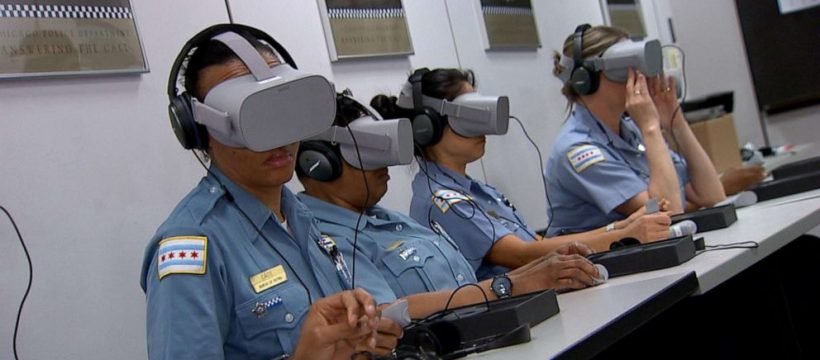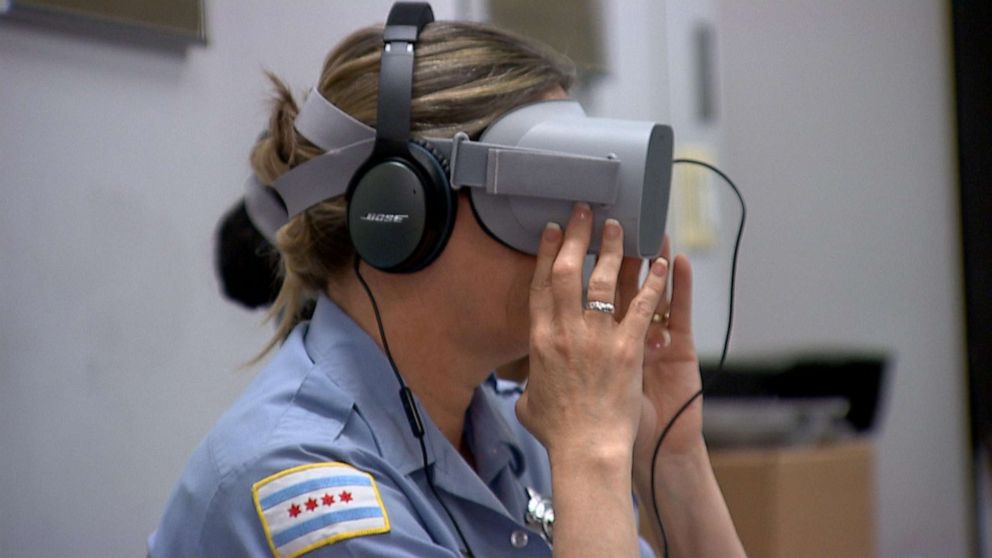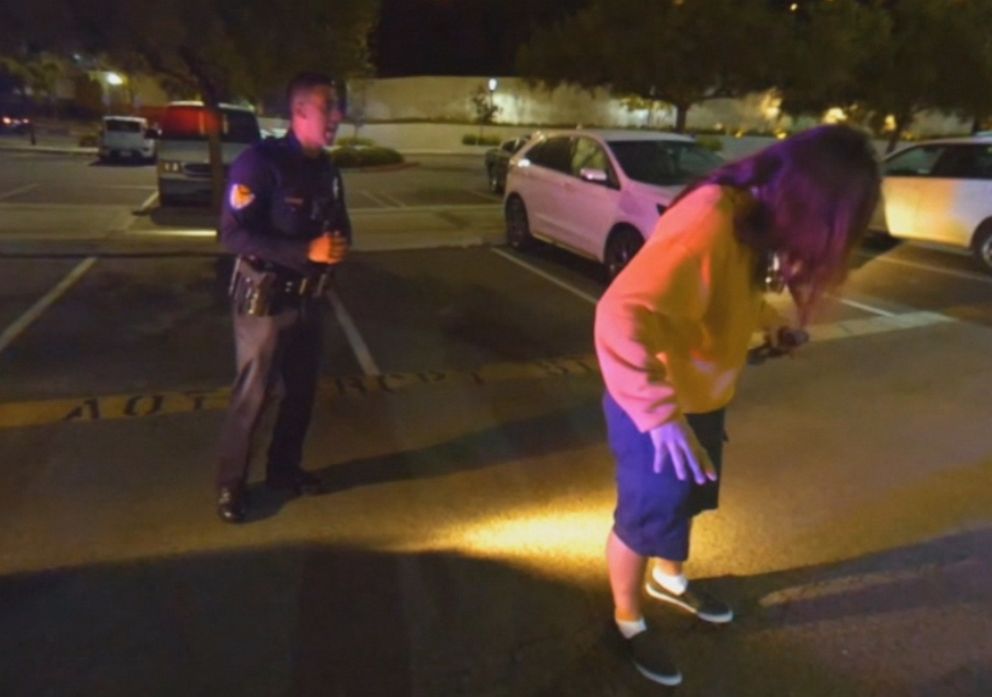It seems to happen almost every week: a cop in America is called to respond to some sort of disturbance -– a man with a weapon, a woman disrupting the midnight calm at an apartment complex, an escalating domestic dispute.
Law enforcement arrives, confusion ensues, a shot is fired, and suddenly the subject is on the ground.
Only in the aftermath does it emerge that the cop was not dealing with a violent criminal but someone having a psychiatric emergency: a schizophrenic episode, a problem with their medications, drug-induced psychosis, or a person with autism who is lost and cannot find the way to where they were going.
Police in America confront these situations all the time but they are too often untrained and incapable of effectively de-escalating the incidents towards a peaceful conclusion, experts say.
Already this year, at least 53 people diagnosed with mental illness have been shot and killed by U.S. police officers, according to a Washington Post database, which experts on police use of force described as among the most comprehensive of its kind.
“If you look at fatal police encounters, a high percentage of these — some years as much as 25%: in 2017 it was close to 25% of all fatal shootings involving a police officers — were dealing with somebody with a diagnosed mental health issue,” said ABC News contributor John Cohen, a former street cop and senior official at the Department of Homeland Security, who studies police responses to violent encounters as a professor at Rutgers University in New Jersey.
“And, frankly, I think that understates the problem, because a number of those people will have undiagnosed mental health problems,” he said. “It’s a huge issue.”
Chicago Police Superintendent Eddie Johnson told ABC News that “when I was out on the street [in Chicago] I would say that anywhere between … 45% and maybe 55% of the people that I encountered on the street in an arrest situation or a disturbance situation had some type of mental health challenges — whether it was autism, bipolar, schizophrenia, you know — all those things factor in to people that the police encounter on a daily basis.”
The reasons for the increase in police interactions with those in psychiatric or emotional crisis are manifold, said Dr. Bill Lewinski, a leading behavioral scientist and founder of the non-profit Force Science Institute in Illinois, which studies police use of force.
“We’ve seen a significant increase in officer contact with those in the midst of a personal crisis – and part of that is the opioid epidemic, part of it is a significant increase in diagnoses of those on the autism spectrum, and the third is an even greater tightening of [access to] facilities for those that have psychiatric issues.”
But a promising new pilot program in Chicago is being hailed as a potentially groundbreaking new tool that uses virtual reality (VR) to help police better understand how to handle a subject who is in the midst of psychiatric distress.
“This is really an innovative technology and it’s very compelling,” said Lewinski. “There are some verbal programs out there that allow you to hear what someone is hearing, as opposed to seeing and hearing – but virtual reality is on the forefront of teaching tools in this area.”
Using training simulations created for video-gaming goggles, cops can now literally step into the shoes — and, more importantly, the minds – of those suffering from emotional disturbance.
“I think it’s really imaginative to provide the police officers an experience of what a person who may be having a mental health crisis – what they’re hearing, what they’re seeing, what they’re perceiving, their surroundings – because that will give the officers more insight into how to respond to the person’s behavior,” said Cohen.
“It’s part of a broader trend among law enforcement executives around the country that have recognized that their officers need to be better trained and have better resources available to more effectively deal with calls involving individual having some type of psychiatric episode,” said Cohen.
‘You can’t get out’
Last week, ABC News joined a training session at the Chicago Police academy, where officers donned headphones and gaming goggles to learn in the most visceral way possible what it feels like to experience a psychiatric crisis. ABC News reporters also got the opportunity to participate in the VR simulations – and they produce bracing experiences.
Once you put on the headphones and goggles, you are suddenly immersed in a jarring scene in which bright lights are flashing ominously at you from different directions, multiple voices compete at varying volumes for your attention, and your vision blurs unpredictably. While this is happening, police officers are approaching you while a parent to the side is shouting instructions frantically to the police. No matter how you turn your head, you’re trapped inside the experience.
“You can look around everywhere and not find yourself a way out of that scenario – you’re stuck in that guy’s head and you can’t get out,” said Laura Brown, senior director of training at Axon Enterprise, the Arizona-based company that develops technology and weapons products for law enforcement, formerly known as Taser International. Axon is perhaps best known for outfitting police departments around the country with body cameras that have become ubiquitous.
Brown acknowledged that the VR training can be an intense emotional experience, even for hardened veteran cops.
“We put a lot of warnings out that this could trigger folks,” Brown said, before stressing the underlying aim of the training: empathy.
“We’re helping [officers] to develop that sense of empathy [for the mentally ill] — how people with that condition might be experiencing the world.”
She said that in her experience training officers, most are certainly aware of the symptoms of mental illness, but that few if any have ever had the opportunity to literally experience the spectrum of sensations that a person in psychiatric distress is feeling.
“The ‘aha’ moment we get is not so much, ‘oh, they hear things’ or ‘oh, they see things,’ but what the individual feels. If you’re going through a psychotic episode, you feel rational.”
Brown said that Axon has trained about 1,000 instructors to date who can implement the VR training to police nationwide.
One Chicago police officer who was particularly anxious to participate in the virtual reality training sessions is Officer John Tolley, whose son is schizophrenic.
“That’s one reason I wanted to get in on this … if I can help train officers how to deal with this, because … I have a more intimate view of it,” Tolley told ABC News correspondent Gio Benitez. “My son is now 19, and I have watched him grow with this disease since he first told it to me at 10 years old.” ‘
“And if I can break the stigma on it with some of these officers, you know, and let them understand that it’s … it’s a disease, you know? You don’t do anything yourself to get this. It just comes on you … no one is at fault for it. And if I can help officers understand that and break the stigma, that’s why I want to be in here.”
‘De-institutionalization’
The existing mental health crisis in America dates back to 1955, with the introduction of Thorazine, the first effective anti-psychotic medication, and a simultaneous nationwide push a decade later with the creation of Medicaid and Medicare towards de-institutionalization – a nationwide campaign to move the mentally-ill out of state psychiatric institutions and into community medical centers, or to live independently on their own.
The population of severely mentally ill patients in public psychiatric hospitals plunged from 558,239 in 1955 to 71,619 in 1994, according to “Out of the Shadows: Confronting America’s Mental Illness Crisis,” by Dr. E. Fuller Torrey. A study published in 2010 by the National Sheriffs’ Association and the non-profit Treatment Advocacy Center found that there were three times more severely mentally ill people in America’s jails and prisons than its hospitals.
“There’s a direct connection between decreases in funding for in and outpatient mental health services and an increase in police encounters with mental ill persons,” observed Cohen. “Increasingly, state and local law enforcement agencies have become the response mechanism for communities to deal with individuals involved in mental health crises.”
This decades-long de-institutionalization process reached a crisis point on September 24, 1987, when police in Memphis, Tennessee responded to a call about Joseph Dewayne Robinson, a 27-year-old paranoid schizophrenic who reportedly cut and stabbed himself with a butcher knife as many as 120 times. Police responded, confusion ensued, shots were fired and Robinson ended up dead.
That incident led to the creation by the Memphis Police Department of crisis intervention training (CIT) – which spread to thousands of departments around the country and the globe and is now a 40-hour course considered to be the gold standard in U.S. police training to deal with mentally and emotionally-disturbed subjects.
‘I am God! I am in outer space!”
The Chicago Police Department knows this tragic scenario all too well. In 2015, Officer Robert Rialmo fatally shot Quintonio LeGrier, 19, after the teenager had called 911 three times asking that an officer be sent to his address.
During the calls, the first of which was made at 4:18 a.m. the day after Christmas and the last of which was placed three minutes later, LeGrier repeatedly said that he needed help and wanted an officer sent to his address. The 911 dispatcher sounded frustrated by Quintonio’s refusal to answer her questions, and at one point, she terminated one of the calls.
When asked what was wrong, LeGrier responded: “Someone is ruining my life.”
It would emerge later that LeGrier had been the subject of numerous police encounters in the months leading up to his death for exhibiting increasingly erratic behavior. After one incident in which LeGrier allegedly stared down and then chased a female student at Northern Illinois University, he was involuntarily committed to an area hospital for psychiatric evaluation after repeatedly telling cops “I am God! I am in outer space!” according to the Chicago Tribune.
When LeGrier was fatally shot by police, his 55-year-old neighbor, Bettie Jones, was also killed by police bullets — compounding the tragedy with a collateral killing.
The shooting was ruled unjustified and Johnson, the Chicago Police Superintendent, has said that the right training could have made the difference.
“I think that if a CIT-trained officer had responded and had enough time to observe and communicate with an individual, then there may have been a different outcome,” Johnson told ABC News.
Given the dramatic increase in mental health crises nationwide, the kind of deeply-engaging training that Axon’s VR simulators offer is vital to American policing, according to Lewinski, who has a PhD in police psychology and is a professor emeritus of law enforcement at Minnesota State University.
“As long as we are sending law enforcement in to be the front line responders to those in perceptual, cognitive, mental or chemically-induced crisis, they really need to know how their actions are being perceived by those subjects,” he told ABC News. “This is an important, almost foundation awareness they need. And the [Axon virtual reality training program] is “a really hot topic, the next step in police training.”
“We need to get better in a number of ways to figure out how to develop social and emotional intelligence for those working in the streets with those in crisis. And this is one of the ways of helping police officers get inside the heads of those in crisis,” Lewinski continued. “It’s the beginning of building social intelligence in U.S. law enforcement.”
Lewinski said that American police officers are all too aware of the gap between traditional police training and some of the clinical skill sets necessary to deal with today’s emotionally-disturbed subjects.
“We have just spent a million dollars, three years of research, two full-time PhDs, two full-time Masters-level students and made thousands of videos of police training,” he said of his institute’s most recent work.
“And our conclusion is that there is no profession whose training is so important, and so impactful, that spends so little on training,”
“No other profession sends professionals out with so little support and so little training – especially because they can take away people’s lives and liberties,” Lewinski concluded.
“And is there a crisis in the policing world over this? Yes.”
Source: Read Full Article



